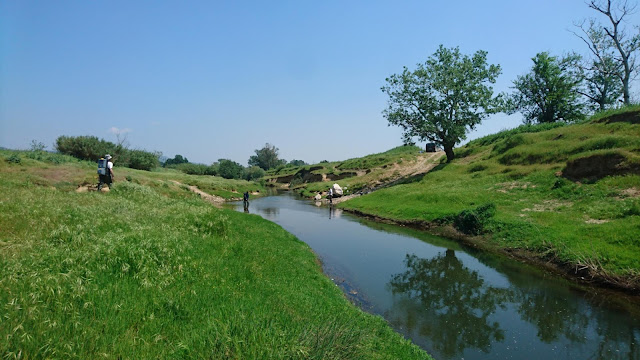 |
| The Kossinthos River near Polisito, Xanthi Prefecture. |
Electrofishing in Northeastern Greece
Late April 2018
As I write this many ichthyologists are sampling fish in rivers using electrofishing in Greece. Much of this is done for compliance with the EU Water Framework Directive (WFD) and with the support of generous European Union funding. The waters and nature of Europe are a European Union heritage and a shared responsibility- one thing that binds us heterogeneous peoples on this continent.
Electrofishing is not a sport or a recreational activity - it is a form of scientific sampling used for monitoring. Many efforts towards standardization of the "sampling method" have helped make this the preferred method of monitoring both to assess the health of water bodies and of fish populations. What we do for the EU WFD is actually a form of bioassessment - using a biological indicator to monitor ecosystem health. What a concept!! ...Thank you: James Karr, and the USA Water Act and USA EPA...(long story...).
Here are some photos from an electrofishing sampling foray that spans from Alexandroupolis to the Axios river.
In six river systems we surveyed on this trip, we caught 30 species of freshwater fishes. And we also had some time to peer into the landscapes and check for anthropogenic pressures (and enjoy the cultural wonders too...).
When we do electrofishing we also take careful notes of the river and riparian habitats, many photos, video. I always also use a Spanish Riparian Habitat Quality Index, QBR+, to take notes of the riparian conditions and the riparian vegetation (...the "+" refers to the woody flora survey I do with the QBR). I feel so privileged to be a part of all this!
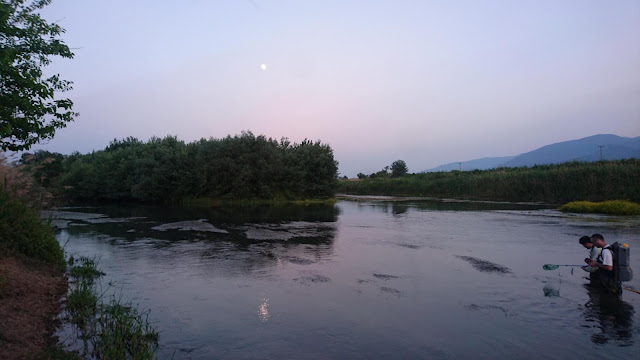 |
The confluence of the Xiropotamos into Tafros Phillipon, in the Tenaghi Phillipon (Photo: Christina Papadaki). Sunset fishing with a rising full moon (14 species recorded here!).
 |
The Loutros stream, near the National Highway; a fantastic small stream in the Evros hills; 7 species of fishes were recorded here (Photo: Elias Dimitriou).
|
|
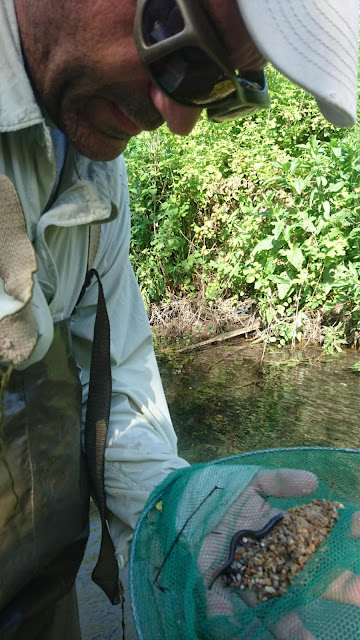 |
| Catching our first Greek Brook Lamprey (Caspiomyzon hellenicus), Kavalla-Drama Prefectures (Photo: HCMR team). |
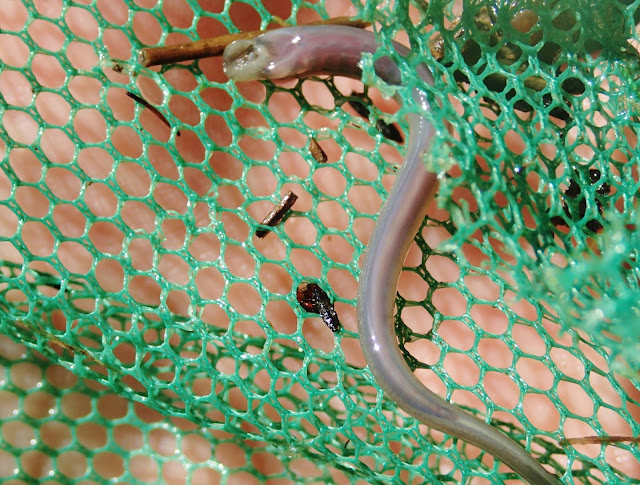 |
| Greek Brook Lamprey (Caspiomyzon hellenicus), Kavalla-Drama Prefectures. |
 |
| Greek Brook Lamprey (Caspiomyzon hellenicus), Kavalla-Drama Prefectures. |
 |
| Typical three person sampling team in a stream in the Evros Hills. |
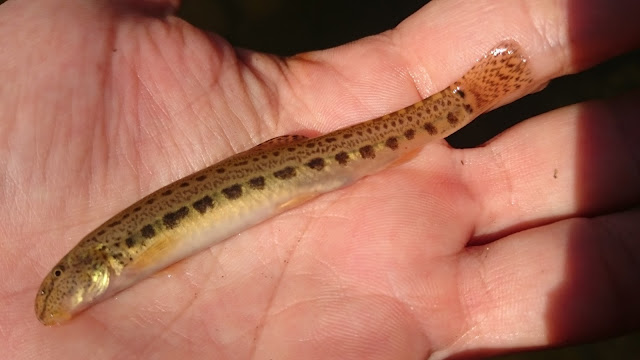 |
| Struma Spined Loach, Cobitis strumicae, in the Loutros Stream, Evros Hills. This is a very common species in a variety of habitats from the estuaries to the foothills. |
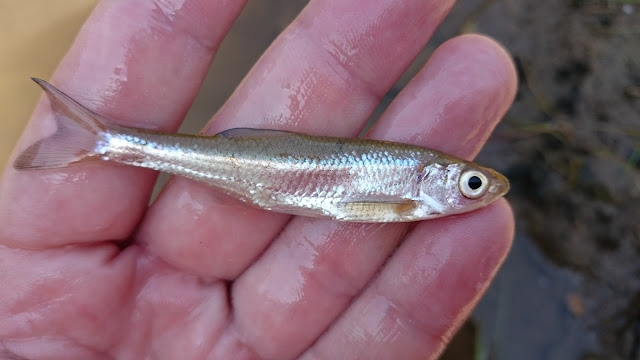 |
| European Bleak, Alburnus alburnus from the Loutros stream, Evros Hills (specimen collected since the identification in still unconfirmed). |
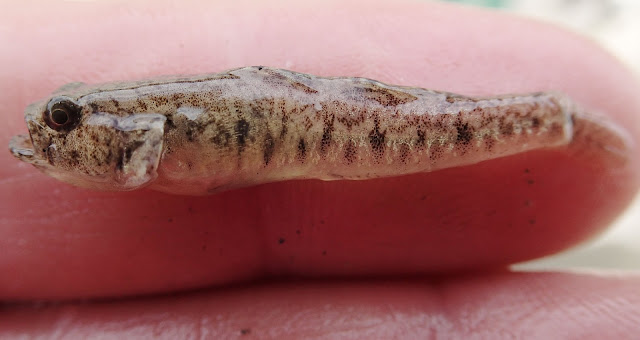 |
| Caucasian Goby, Knipowitschia caucasica in the Axios River. This specimen looks like a male; they reach only a few centimeters in size and live for about 1.5 to two years. |
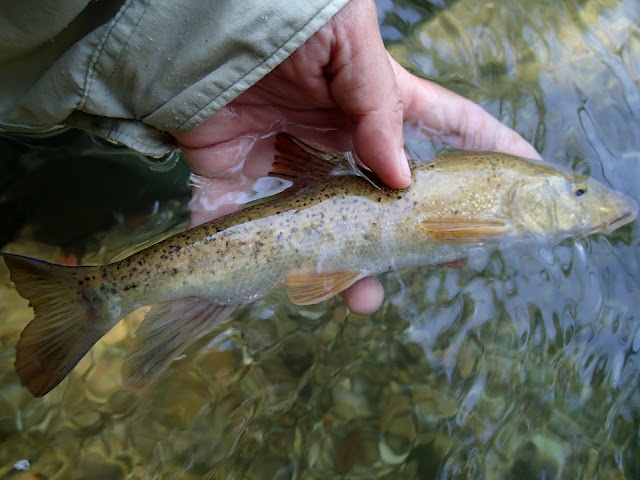 |
| Strumica Barbel, Barbus strumicae, in a cool-water tributary of the Aggitis. |
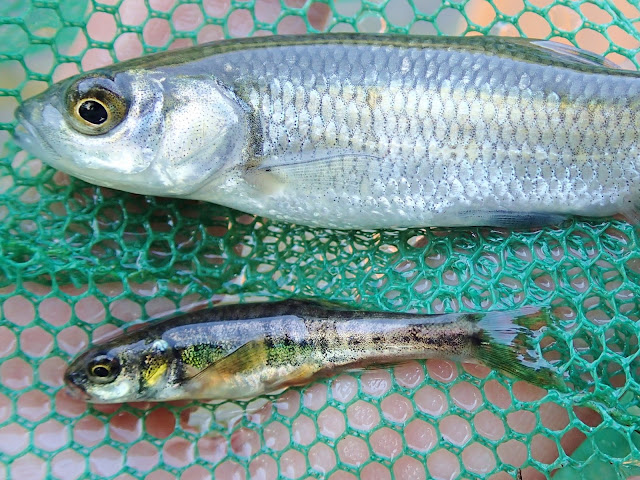 |
| Strymon Minnow, Phoxinus strymonicus with the much larger Maritza Chub (top). |
 |
| Maritza Chub, Squalius orpheus, in the Tenaghi Phillipon area. This specimen is about 45 cm TL, one of the largest we've caught. |
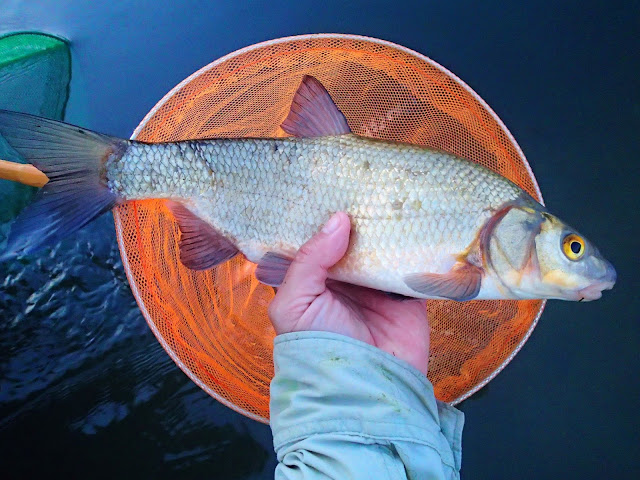 |
| Dark Vimba, Vimba melanops, this is one of the largest we've caught running waters in Greece. |
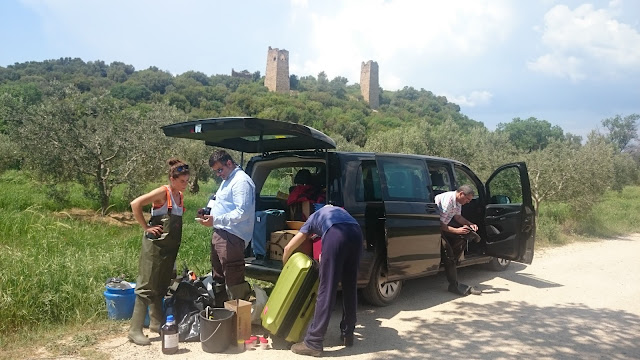 |
| Five-person team in a large van, gathering water, sediment, chemical, physico-chemical reading and fish/fish habitat data. Team members included Elias Dimitriou and Tassos Papadopoulos (seated). Here at the Avas Castle north of Alexandroupolis. |
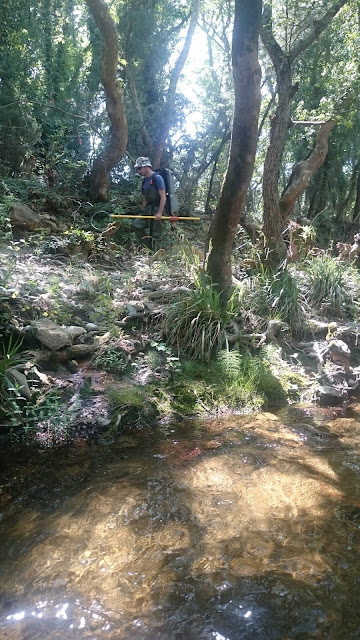 |
| Platanus orientalis forest in the Avantas stream. Nektarios carrying the Smith-Root. |
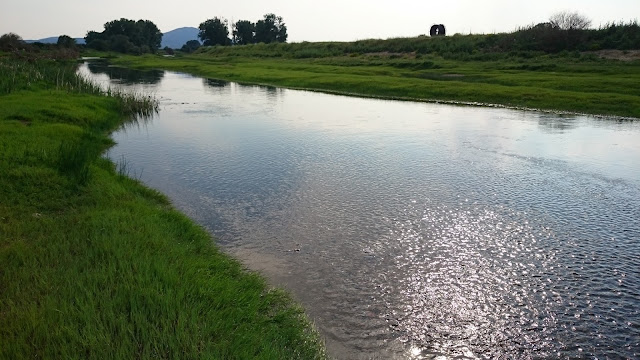 |
| The Filiouris river basin, one of the most exciting areas for river and wetland biodiversity in Greece. |
 |
| Disply of local sweets in Komotini. Many types of Baklava, Kataifi etc. etc. The variaty is amazing, documenting the cultural richness of this area- a crossroads wedged between the two historic cities of Constantinople and Thessaloniki. And of course the Ottoman Empire made these sweets famous and widespread throughout the East. All my respect! |
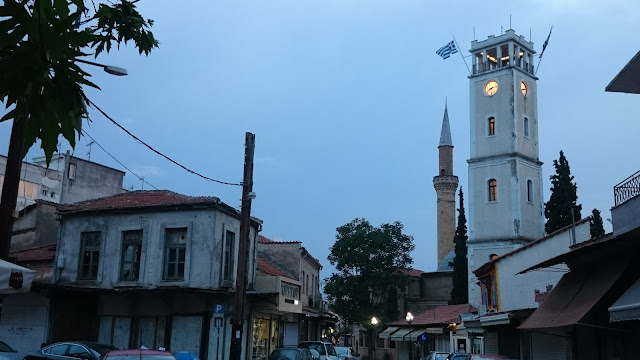 |
| Komotini, a great base to explore the region's nature and culture. Komotini is a wonderful symbol of peace among our peoples, Hellenophone Christians - most are from Eastern Romelia and the Pontus with the Moslims - Turkophones, Gypsies and Pomaks all live at peace. I call the Turkophones Turks as most probably like to be called that (i.e. since in Asia Minor we also called ourselves "Greeks" - Romans or Rum to the Turks). The Turks call Komotini, Gumultzina which is actually a tongue-slip term from the older Byzantine name I was told. Yes a culturally and historically colourful! |
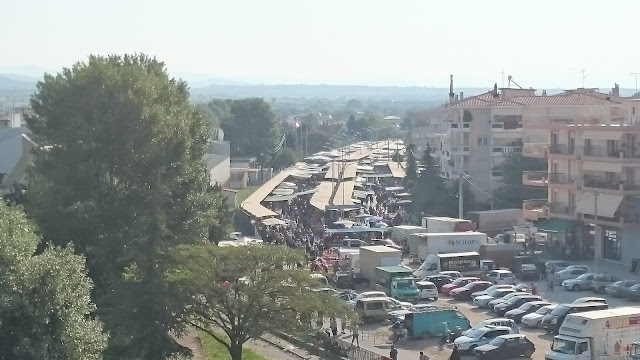 |
| The grand pazari on Saturday at Komotini. |
 |
| Almost just like any other Greek city but many women wear headscarves, Komotini. |
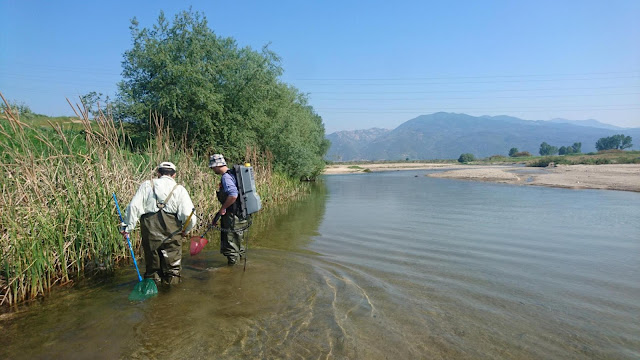 |
Electrofishing with Nektarios Kalaitzakis and Christina Papadaki (who took this pic) in the Kompsatos River just west of Komotini.
|
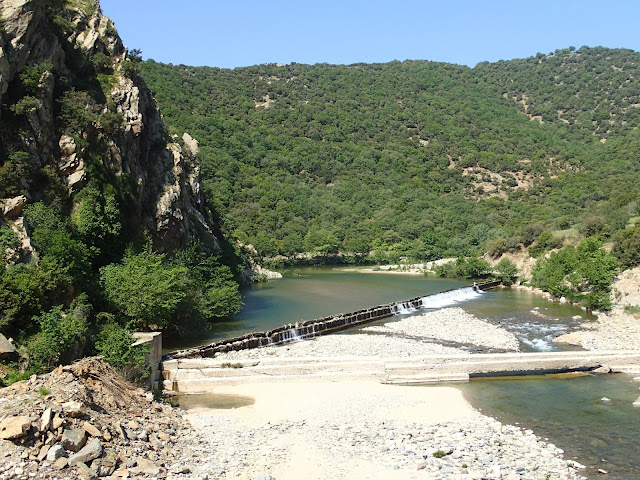 |
| The water diversion of the Kompsatos river at the Eastern Rhodope foothills; this is the site of a proposed Dam - it would totally destroy the lower part of the river, flood a spectacular canyon and cripple the unique lagoonal-lake system of Lake Vistonis downstream. |
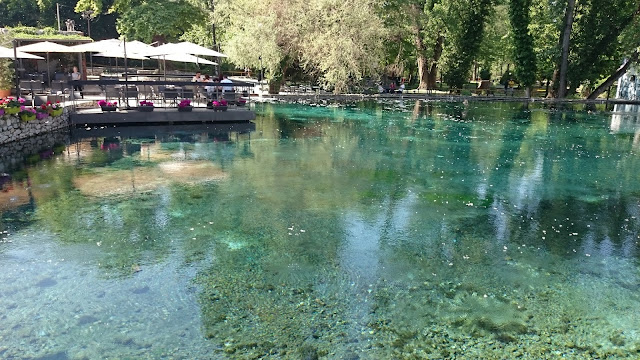 |
| The huge Agia Varvara Springs in the center of the city of Drama (a tributary of the Aggitis system). Here Barbus strumicae, Squalius orpheus, Alburnoides strymonicus are abundant and will respond to being fed by bread (but please don't feed the wild fishes!). |
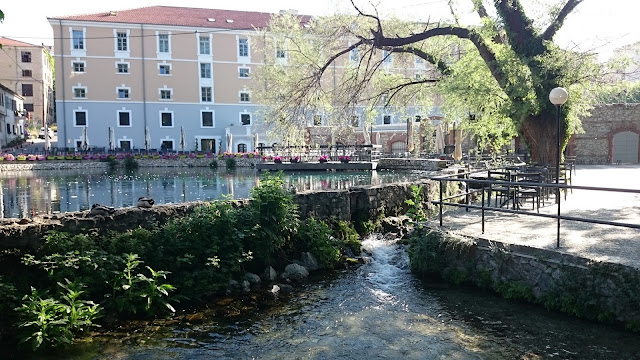 |
| Agia Varvara Springs, Drama. The hotel in the background is an old Tobacco plant, now almost too luxurious to host fishy-smelly ecotourists like us.... |
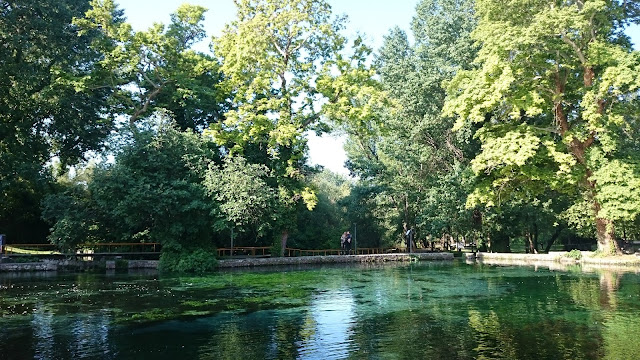 |
| Agia Varvara Springs, Drama |
 |
| Agia Varvara Springs, Drama |
 |
| The Struma Stone Loach, Oxynoemacheilus bureschi, is found east to the Filiouris river. |
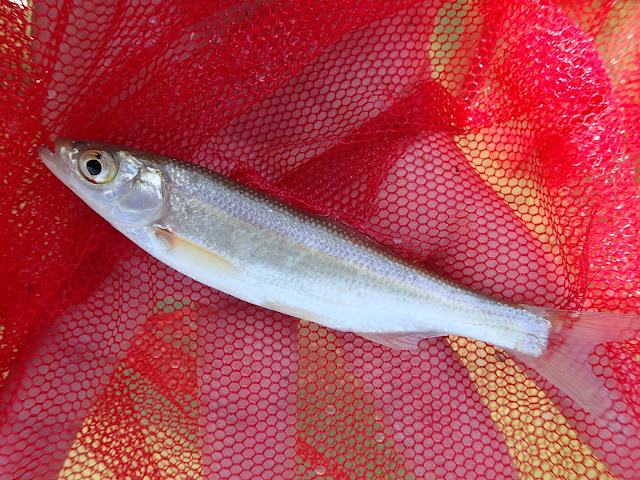 |
| The large and intensively migratory bleak in the Vistonis-Filiouris catchments, the narrow endemic Alburnus vistonicus. |
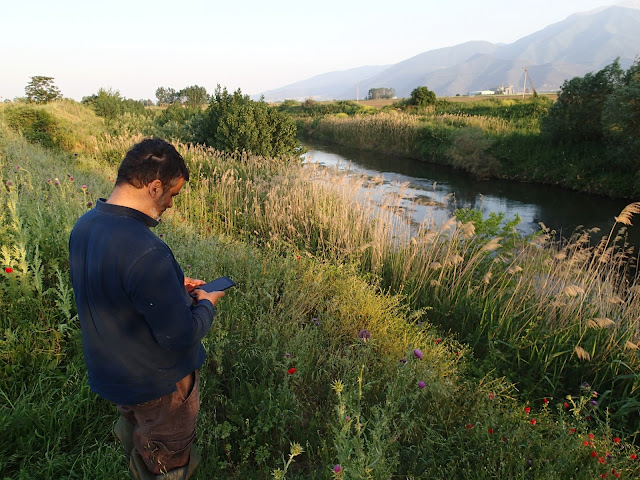 |
| One of the canals of the Tenaghi Phillipon, recently added within the Natura 2000 network by our combined project. |
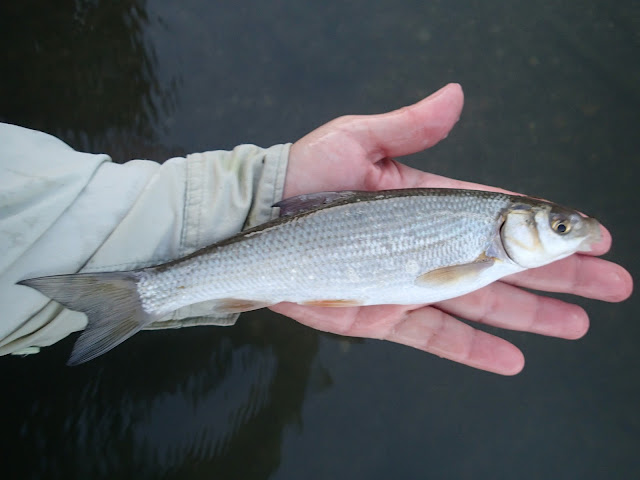 |
| The Vardar Nase, Chondrostoma vardarensis is a wonderful vegetarian of the Aggitis subcatchement (this one near Drama). |
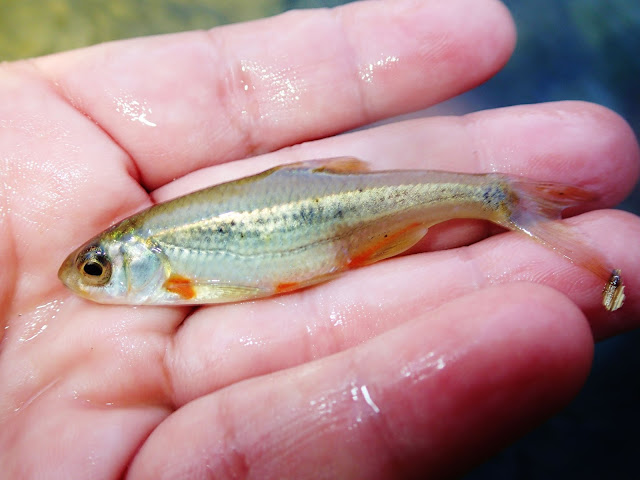 |
| Strymon Sprilin, Alburnoides strymonicus is very common in cold water spring-fed areas in the upper Aggitis tributaries. |
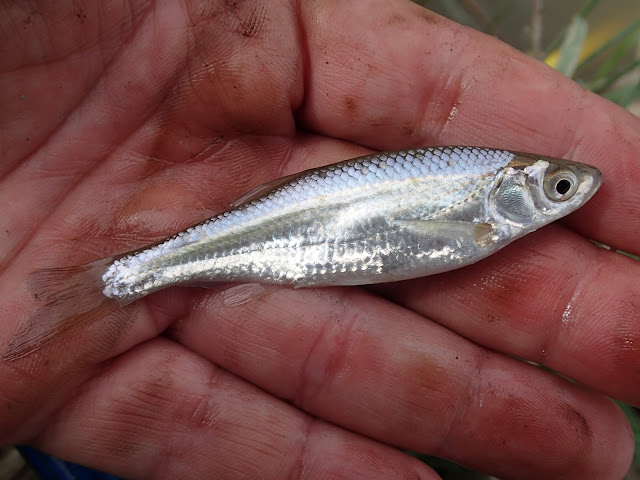 |
| Thessalian Bleak, Alburnus thessalicus is common in the lower Axios (Vardar). |
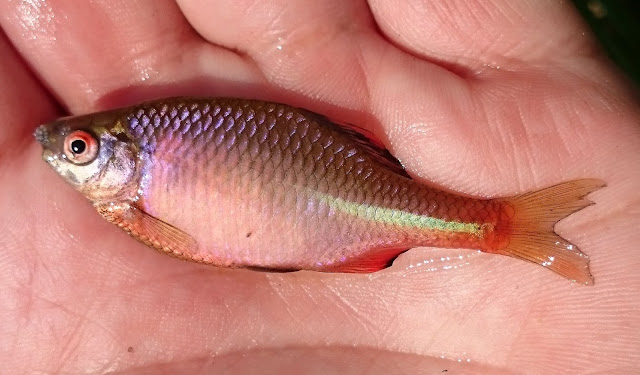 |
| Definately one of the most interesting fishes in NE Greece, the Bitterling Rhodeus amarus (here at the Filiouris River, Xanthi Prefecture). |
 |
| Rarely cought by standard electrofishing while wading in Greece is the European Rudd, Scardinius erythrophthalmus (Kavala Prefecture). |
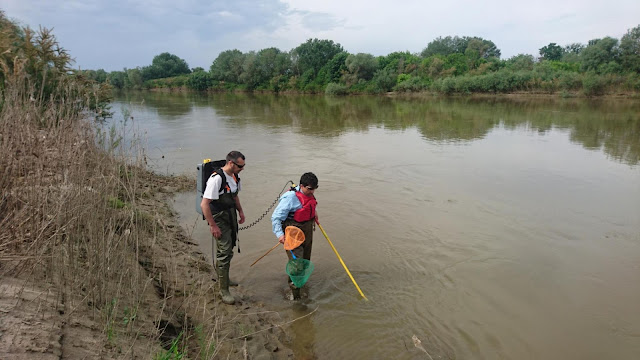 |
| The Axios river at Chalastra. Note that the fisher is wearing a life-jacket!!! Fishing in such conditions is a luck-of-the-draw experience. There were more fishes seen in the adjacent floodplain pools and ponds (Photo: C. Papadaki). |
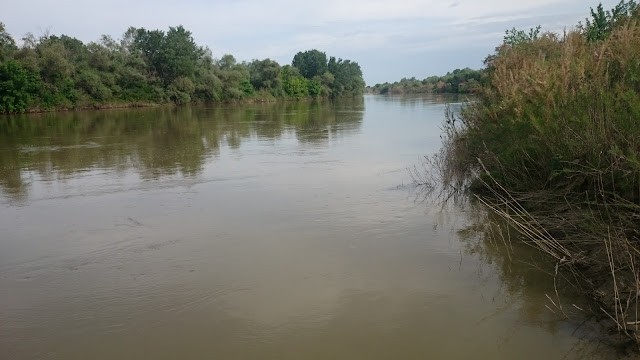 |
| The Axios (Vardar), second largest river in Greece after the Evros (Maritsa-Meric). |
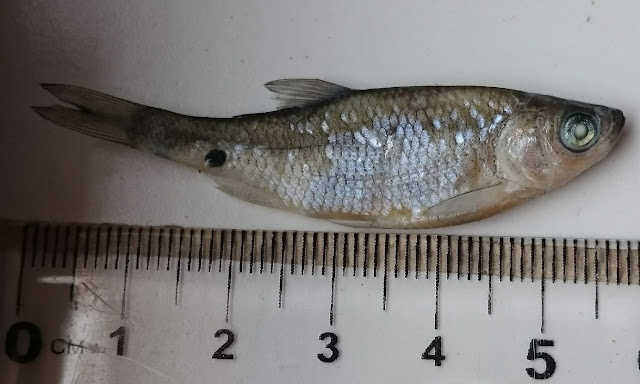 |
| Back in the lab: Looking at this specimen of European Rudd Scardinius erythrophthalmus (preserved in ethanol solutions, photo taken two days after collection; it has lost its true colours). |

